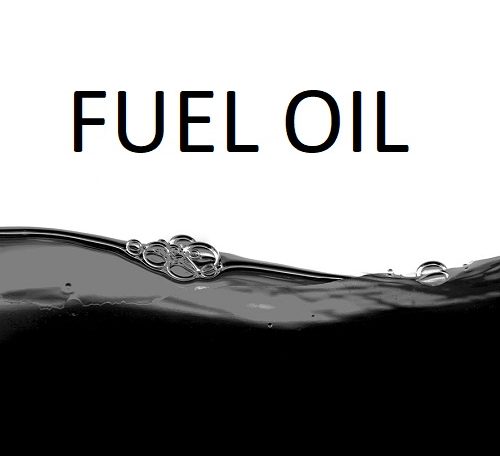This article discusses the meaning of fuel oil, the composition, uses and furthermore explains the general classification fuel oil.
What Is Fuel Oil
Fuel oil is any of various fractions obtained from the distillation of petroleum (crude oil). Such oils include distillates (the lighter fractions) and residues (the heavier fractions). Fuel oils include heavy fuel oil (bunker fuel), marine fuel oil (MFO), furnace oil (FO), gas oil (gasoil), heating oils (such as home heating oil), diesel fuel, and others.
The term fuel oil generally includes any liquid fuel that is burned in a furnace or boiler to generate heat (heating oils), or used in an engine to generate power (as motor fuels).
Composition
It consists of long-chain hydrocarbons, particularly alkanes, cycloalkanes, and aromatics. Small molecules, such as those in propane, naphtha, gasoline, and kerosene, have relatively low boiling points, and are removed at the start of the fractional distillation process. Heavier petroleum-derived oils like diesel fuel and lubricating oil are much less volatile and distill out more slowly.
However, it does not usually include other liquid oils, such as those with a flash point of approximately 42 °C (108 °F), or oils burned in cotton- or wool-wick burners. In a stricter sense, fuel oil refers only to the heaviest commercial fuels that crude oil can yield, that is, those fuels heavier than gasoline (petrol) and naphtha.
Uses
Oil has many uses; it heats homes and businesses and fuels trucks, ships, and some cars. A small amount of electricity is produced by diesel, but it is more polluting and more expensive than natural gas. It is often used as a backup fuel for peaking power plants in case the supply of natural gas is interrupted or as the main fuel for small electrical generators.
READ: AUTOMATIVE GAS OIL (AGO)
Residual fuel oil is less useful because it is so viscous that it has to be heated with a special heating system before use and it may contain relatively high amounts of pollutants, particularly sulfur, which forms sulfur dioxide upon combustion. However, its undesirable properties make it very cheap. In fact, it is the cheapest liquid fuel available. Since it requires heating before use, residual fuel oil cannot be used in road vehicles, boats or small ships, as the heating equipment takes up valuable space and makes the vehicle heavier.
Heating the oil is also a delicate procedure, which is impractical on small, fast-moving vehicles. However, power plants and large ships are able to use residual fuel oil.
Use of residual fuel oil was more common in the past. It powered boilers, railroad steam locomotives, and steamships. Locomotives, however, have become powered by diesel or electric power; steamships are not as common as they were previously due to their higher operating costs (most LNG carriers use steam plants, as “boil-off” gas emitted from the cargo can be used as a fuel source); and most boilers now use heating oil or natural gas.
Heavy fuel oils continue to be used in the boiler “lighting up” facility in many coal-fired power plants. This use is approximately analogous to using kindling to start a fire. Without performing this act it is difficult to begin the large-scale combustion process.
READ: DPR or NUPRC Import License/ Permit Requirements
General classification
Although the following trends generally hold true, different organizations may have different numerical specifications for the six fuel grades. The boiling point and carbon chain length of the fuel increases with fuel oil number. Viscosity also increases with number, and the heaviest oil must be heated for it to flow. Price usually decreases as the fuel number increases.
Number 1 fuel oil is a volatile distillate oil intended for vaporizing pot-type burners and high-performance/clean diesel engines. It is the kerosene refinery cut that boils off immediately after the heavy naphtha cut used for gasoline. This fuel is commonly known as diesel no. 1, kerosene, and jet fuel. Former names include: coal oil, stove oil, and range oil.
Number 2: is a distillate home heating oil. Trucks and some cars use similar diesel no. 2 with a cetane number limit describing the ignition quality of the fuel. Both are typically obtained from the light gas oil cut. The name gasoil refers to the original use of this fraction in the late 19th and early 20th centuries—the gas oil cut was used as an enriching agent for carbureted water gas manufacture.
READ: CRUDE OIL, USES AND ITS BENEFITS
Number 3: was a distillate oil for burners requiring low-viscosity fuel. ASTM merged this grade into the number 2 specification, and the term has been rarely used since the mid-20th century.
Number 4: is a commercial heating oil for burner installations not equipped with preheaters. It may be obtained from the heavy gas oil cut. This fuel is sometimes known by the Navy specification of Bunker A.
Number 5 :is a residual-type industrial heating oil requiring preheating to 77–104 °C (171–219 °F) for proper atomization at the burners. It may be obtained from the heavy gas oil cut, or it may be a blend of residual oil with enough number 2 oil to adjust viscosity until it can be pumped without preheating. This fuel is sometimes known by the Navy specification of Bunker B.
Number 6 is a high-viscosity residual oil requiring preheating to 104–127 °C (219–261 °F). Residual means the material remaining after the more valuable cuts of crude oil have boiled off. The residue may contain various undesirable impurities, including 2% water and 0.5% mineral oil. This fuel may be known as residual fuel oil (RFO), by the Navy specification of Bunker C, or by the Pacific Specification of PS-400.

